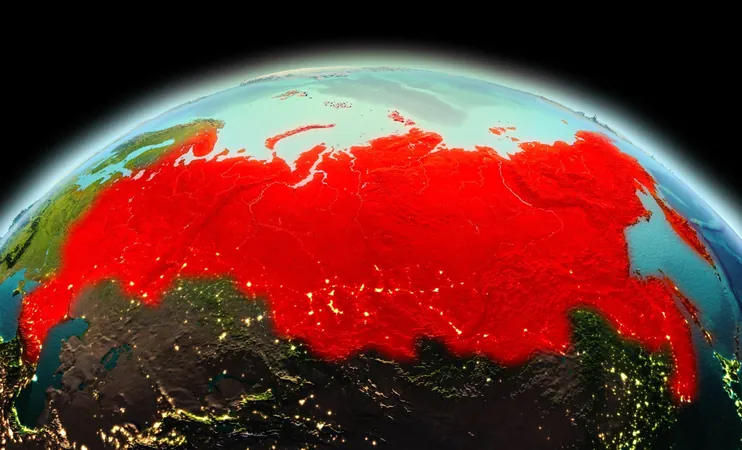
Shocking Revelation: Earth's Continents Might Splinter Apart from Within!
2025-05-24
Author: Wei
Hidden Chemistry of Earth's Mantle Uncovered
Recent groundbreaking research from the Guangzhou Institute of Geochemistry (GIG-CAS) reveals that the subtle chemistry within the Earth's mantle plays a far more dramatic role in shaping the continents than we ever thought possible. Published in *Science Advances*, this study shows how trapped carbon can either stabilize ancient continental structures or, conversely, trigger their collapse.
How Carbon Shapes the Fate of Continents
Beneath our feet, a riveting saga is taking place. When oceanic plates sink into the mantle through a process called subduction, carbon-rich materials don’t simply vanish. Under immense pressure and heat—up to 660 kilometers deep—they transform in unexpected ways. They might either reinforce continental roots or slowly eat away at them. The research highlights the crucial role of the mantle's redox state, determining how carbon influences continental stability.
Lead author Professor YU Wang emphasizes, “The redox state of the deep mantle is crucial for how carbon cycles between the Earth’s surface and its interior.” In cooler, reduced conditions, carbon solidifies into diamonds, anchoring the continent's stable cores. However, in hotter, oxidized environments promoted by mantle plumes, carbon becomes fluid and wreaks havoc on stability.
Diamonds: A Sign of Stability or Doom?
In regions with cooler mantle temperatures, subducted carbonates exhibit fascinating behaviors. These environments encourage the formation of diamonds and other stable minerals, bonding firmly to the cratons and ensuring that large-scale continental deformation is minimized. Professor Wang notes, “The fate of subducted carbon greatly depends on mantle temperature and redox conditions, impacting continent evolution over time.”
Take the Amazonia Craton, for instance, where diamonds show unique inclusions formed under reduced conditions. These gems are not just beautiful; they are historical documents that indicate the stability of landmasses for hundreds of millions of years.
The Instability of Oxidized Mantles
In contrast, the Kaapvaal Craton in southern Africa tells a starkly different story. This region has experienced significant geological turmoil, with its lithosphere weakened and uplifted due to oxidized carbon-rich melts. These melts, spurred by mantle plumes, infiltrate and destabilize the lithosphere, often sparking volcanic eruptions and surface upheaval.
Diamonds from Kaapvaal—like those from Jagersfontein and Monastery—possess distinctive mineral traces that reveal their oxidized origins. They provide evidence of a dynamic mantle, continually reshaping the land above, which played a crucial role in dramatic geological events, such as the breakup of Gondwana during the Mesozoic era.
Diamonds: Earth's Time Capsules
Diamonds are not merely precious gems; they are time capsules that reveal Earth's hidden history. The minerals trapped within them disclose the pressures and chemical conditions at the time of their formation. For example, diamonds formed in reduced environments, like those in Amazonia, have high sodium and low calcium content, indicating stability. In stark contrast, diamonds from plume-affected areas like Kaapvaal exhibit opposite trends, showcasing the tumultuous processes that can destabilize the very ground we stand on.



 Brasil (PT)
Brasil (PT)
 Canada (EN)
Canada (EN)
 Chile (ES)
Chile (ES)
 Česko (CS)
Česko (CS)
 대한민국 (KO)
대한민국 (KO)
 España (ES)
España (ES)
 France (FR)
France (FR)
 Hong Kong (EN)
Hong Kong (EN)
 Italia (IT)
Italia (IT)
 日本 (JA)
日本 (JA)
 Magyarország (HU)
Magyarország (HU)
 Norge (NO)
Norge (NO)
 Polska (PL)
Polska (PL)
 Schweiz (DE)
Schweiz (DE)
 Singapore (EN)
Singapore (EN)
 Sverige (SV)
Sverige (SV)
 Suomi (FI)
Suomi (FI)
 Türkiye (TR)
Türkiye (TR)
 الإمارات العربية المتحدة (AR)
الإمارات العربية المتحدة (AR)